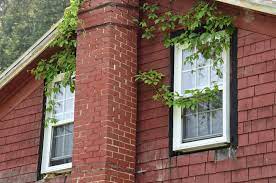Sewage Cleanup: Efficient Strategies for Restoring Sanitary Environments

Introduction:
Dealing with sewage backup or overflow is a distressing situation that can pose serious health risks. Effective sewage cleanup is essential not only to restore sanitary conditions but also to prevent further contamination. In this article, we will explore user-friendly strategies and steps you can take to efficiently tackle sewage cleanup and restore a safe and healthy environment.
Assess the Situation:
The first step in sewage cleanup is to assess the extent of the damage. Wear appropriate protective gear, such as gloves and boots, and evaluate the affected area. Determine the source of the sewage problem, whether it’s a blocked sewer line, malfunctioning septic system, or other issues. If the situation seems beyond your capabilities, it’s best to contact a professional cleanup service.
Ensure Safety:
Safety should always be a top priority during sewage cleanup. Sewage contains harmful bacteria, viruses, and other pathogens that can cause illness. Keep children, pets, and vulnerable individuals away from the affected area. Proper ventilation and the use of masks or respirators can help minimize exposure to airborne contaminants. Avoid direct contact with sewage water and use disinfectants specifically designed for sewage cleanup.
Remove Standing Water:
If there is standing sewage water, it needs to be removed promptly. Use a wet vacuum or a pump to extract the water, directing it into a sewer line or an external container. Be cautious not to spill or splash sewage water during the extraction process. Dispose of the contaminated water properly and in accordance with local regulations.
Clean and Disinfect:
Thoroughly clean and disinfect all surfaces and items that came into contact with sewage water. Use a detergent or specialised sewage cleanup solution to scrub and remove any visible residue. Pay extra attention to floors, walls, furniture, and personal belongings. Rinse with clean water and then apply a disinfectant recommended for sewage cleanup. Allow sufficient drying time to prevent mold growth.
Dispose of Contaminated Materials:
Some porous materials, such as carpets, upholstered furniture, and drywall, may need to be discarded if they are heavily contaminated with sewage. Non-porous items, such as metal or plastic utensils, can be thoroughly cleaned and disinfected. Follow local guidelines and regulations for proper disposal of hazardous waste. It is advisable to consult with local authorities or professional cleanup services for guidance on safe disposal methods.
Ventilation and Restoration:
After completing the cleanup process, ensure proper ventilation in the area. Open windows, use fans, or consider dehumidifiers to aid in drying out the space. Monitor the area for any signs of mold growth or persistent odors, and take appropriate action if necessary. Consider consulting with restoration professionals to assess the structural integrity and potential long-term effects of the sewage backup.
Conclusion:
Sewage cleanup is a challenging task that requires careful planning, proper safety measures, and thorough cleaning. By following the efficient strategies outlined in this article, you can restore sanitary conditions and protect the health of yourself and others. However, it’s crucial to remember that some situations may be best handled by professionals. If in doubt or faced with a severe sewage problem, don’t hesitate to seek assistance from experienced sewage cleanup services.



